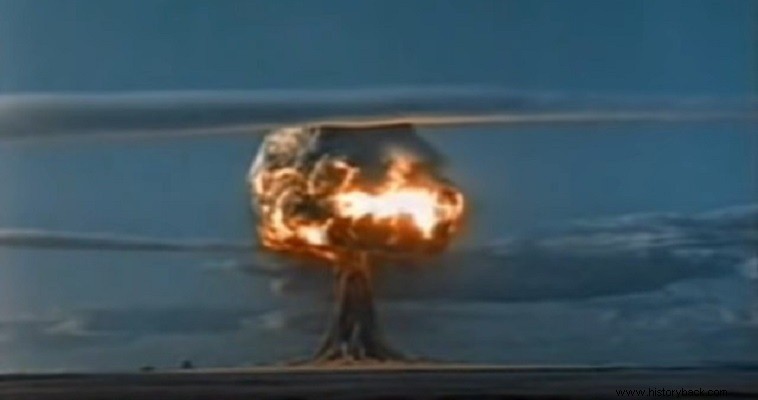
The successful test of the first Soviet atomic bomb RDS-1 in August 1949 inspired the country's leadership to proceed with the acquisition of a thermonuclear weapon, better known as a hydrogen bomb.
The Soviets had access to the American plans thanks to the German scientist Klaus Fuchs. The project to develop the Soviet thermonuclear weapon was entrusted to the well-known nuclear physicist and later deputy Andrei Zakharov.
The RDS-6s bomb
The Americans tested their first hydrogen bomb on November 1, 1952. The Soviets responded on August 8, 1953 with the RDS-6s bomb. On this day Soviet Chief of Cabinet (equivalent to Prime Minister), Georgy Malenkov, announced to the world that the US no longer held a monopoly on thermonuclear weapons.
The test, which the Americans called Joe-4 as it was the fourth Soviet nuclear test, was carried out at the Semipalatinsk test site and involved a weapon with a power of, respectively, 400 kilotons.
The bomb had been placed in a steel tower, which was vented by the explosion while a huge crater was created at the site. A yellow glassy layer was formed around the crater.
However, the Americans, based on studies, concluded that it was not a real hydrogen bomb as its explosion was less powerful than the corresponding American one, proportionally. However, the Soviets, on November 22, 1955, tested their first hydrogen bomb with a power of 1.6 megatons.
The Soviets continued to develop their nuclear weapons at an accelerated pace during the Cold War, creating increasingly powerful weapons. In 1961 they even tested the "Tsar Bomb", with a power of 50 megatons.
